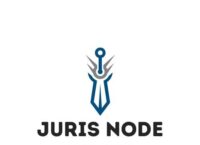The Prevention of Money Laundering Act, 2002 (PMLA) was enacted to prevent the menace of money laundering and to provide for confiscation of property derived from, or involved in, money laundering. Money laundering poses a serious threat not only to the financial system of India, but also to the integrity and sovereignty of India. An urgent need was felt for the enactment of a comprehensive legislation providing for inter alia, preventing money laundering, confiscation of proceeds of crime, setting up of agencies and mechanisms of coordinating measures for combating money laundering.
PMLA provides separate provisions relating to attachment and confiscation of property that may be involved in money laundering and a separate procedure for the trial of the offence of money laundering. Under PMLA, the offence of money laundering is an independent offence, however, it is dependent upon the commission of the offences laid down in the Schedule of PMLA. These offences include offences under the Indian Penal Code 1860, Narcotic Drugs and Psychotropic Substances Act 1985, Explosive Substances Act 1908, Unlawful Activities (Prevention) Act 1967, Arms Act 1959, Wildlife Protection Act 1972, Securities and Exchange Board of India Act 1992 etc.
It is relevant to understand the important concepts given under PMLA. These are:-
- Money Laundering:– Whosoever directly or indirectly attempts to indulge or knowingly assists or knowingly is a party or is actually involved in any process or activity connected proceeds of crime including its concealment, possession, acquisition or use and projecting or claiming it as untainted property shall be guilty of offence of money-laundering.
- Proceeds of crime: – It means any property derived or obtained, directly or indirectly, by any person as a result of criminal activity relating to a scheduled offence or the value of any such property; or where such property is taken or held outside the country, then the property equivalent in value held within the country or abroad.
- Property: – Property means any property or assets of every description, whether corporeal or incorporeal, movable or immovable, tangible or intangible and includes deeds and instruments evidencing title to, or interest in, such property or assets, wherever located.
- Scheduled Offence– It means the offences specified under Part A of the schedule in PMLA; or the offences specified under Part B of the Schedule if the total value involved in such offences is one crore rupees or more; or the offences specified under Part C of the schedule.
- Special Court: – Special Court means a Court of Session designated as Special Court under PMLA.
- Enforcement Directorate (ED): – The Directorate of Enforcement in the Department of Revenue, Ministry of Finance is responsible for investigating the cases of offence of money laundering under PMLA. It is a specialized financial investigation agency which enforces PMLA.
The following flow chart shows the process prescribed under PMLA for the adjudication of property that may be involved in the offence of money laundering. It is important to remember that the trial of the offence of money laundering itself is regulated by the Code of Criminal Procedure (CrPC) 1973, while the entire procedure for the property involved in money laundering is provided under PMLA.


By:
Vijay Pal Dalmia, Advocate
Supreme Court of India & Delhi High Court
Email id: vpdalmia@gmail.com
Mobile No.: +91 9810081079




